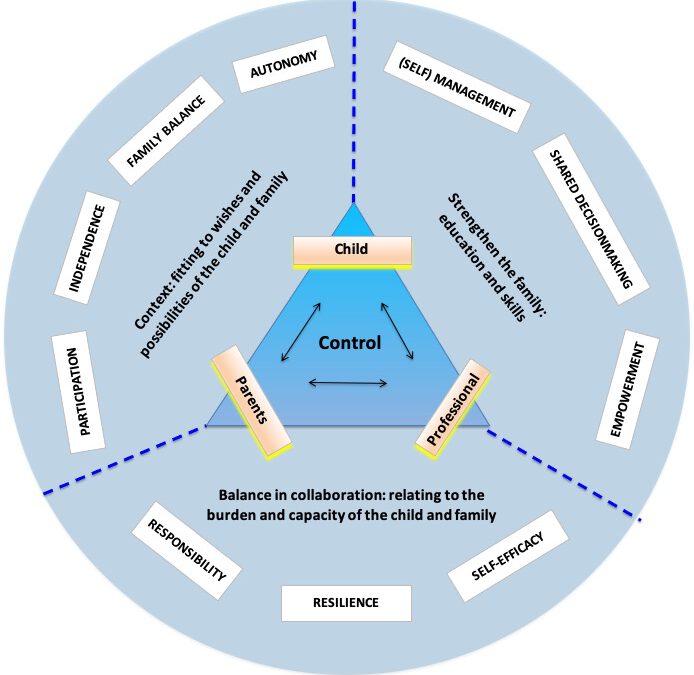Personalized-care and ‘taking control’ are well-known phrases in the field of (child) healthcare in many countries. Given the shift in healthcare to person-centred-care and the role and responsibilities of persons themselves, attention is needed for what we mean with ‘taking control’. Childcare is special because when we talk about clients, we are referring to a sick child within a family. The aim of the review is to get a deeper understanding about the concept of control in the context of families with a child with chronic illness at home and how this is operationalized. A systematic search was performed (n=1266). 78 articles/guidelines were included for qualitative synthesis. From this synthesis, eleven terms were identified for control or related issues. Together they are needed to understand the scopeof the concept of control. Presented in the ‘Web of Control’, the model helps illustrate what ‘taking control’ means in practice, and summarizes the inter-relationship between the terms needed for operationalization. A variety of interventions were described as having an influence on control. None of them did have increasing control as main goal. Also, a variety of instruments are used to measure outcomes. It is not clear to what extent these instruments are correlated with the degree of control. In practice, control and related issues are introduced as separate topics, but considering the shift in healthcare to person-centred-care, a more integrated approach is necessary. The literature shows that the concept of control in families with a child with chronic illness, is broadly defined and encompasses a wide range of related topics. The Web of Control is developed based on these insights and helps to evaluate the ‘taking control’ in practice. Further exploration and development for operationalization in practice is warranted.

